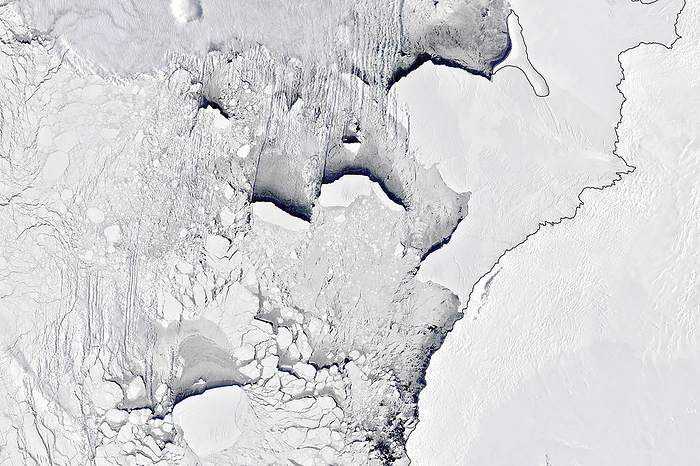
RM
Drift of Antarctic icebergs, satellite image
Satellite image showing the drift of large Antarctic icebergs to the Brunt Ice Shelf on 19 March 2022. Throughout the austral summer of 2021-22, icebergs in the eastern Weddell Sea drifted south with the Antarctic Coastal Current. This medley of large icebergs includes A-23A (lower left), which is currently the world's largest iceberg, D-28 (upper centre), D-30A (upper centre left), A-77 (upper centre right) and B-39 (centre right), which ultimately converged near the Brunt Ice Shelf. As the austral winter arrives, these icebergs will eventually become fully encased in seasonal sea ice. However, at this stage their enormous size makes them effective bulldozers that can plough through sea ice, leaving paths of open water behind them. Image acquired by the MODIS (Moderate Resolution Imaging Spectroradiometer) instrument on NASA's Aqua satellite., by NASA/SCIENCE PHOTO LIBRARY

More
Top Categories
